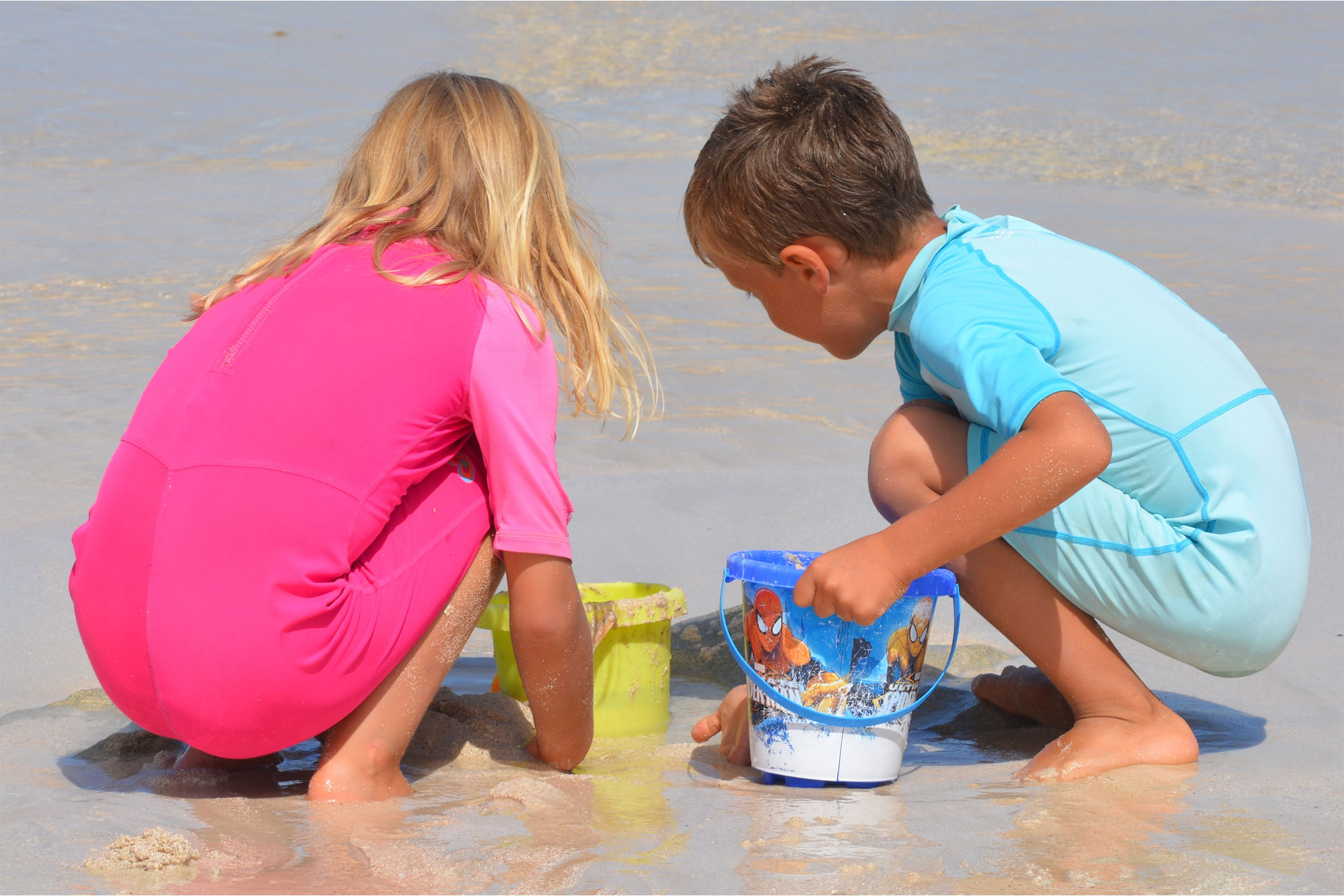
02 Jan Why the beach is an amazing place to teach kids about science.
Researcher, Chris Speldewinde shows you 3 things to try with kids at the beach this summer.
Summer is a wonderful time for families to go the beach and for small children to get to know the water and the sand.
But aside from being a place to relax, my new research shows how the beach provides many ways to teach young children about science.
My ‘beach kinder’ research
I research science, technology, engineering and mathematics (STEM) learning in bush kinders. These are programs where preschool children regularly go into the natural environment with their daycare centre or kinder/preschool, to gain an appreciation for nature.
Educators do not take any toys, balls or games, so children are reliant only on what is available in nature for play.
Bush kinders often happen in parks, forests and gardens but educators and researchers are increasingly looking at the benefits of education around beaches. These “blue spaces” provide children with wide open spaces to learn through play.
But so far there has been little research on educational benefits of beach learning in early childhood settings.
Last year, I observed a “beach kinder”: where childhood educators and four- and five-year-old children went to the beach along Victoria’s Surf Coast. They were spending between three and five hours per week at the beach for a term as part of their regular kinder/preschool program.
What I noticed was how many opportunities the beach provides to teach little kids about science. Here are a three examples families can try on their next visit to the beach.
1. Rockpool life
When the tide is low, the ocean can expose a wide range of plant and animal life. Small fish, crabs, starfish, sea plants and maybe even an octopus can be found in rockpools. You can ask your child:
How many different animals can you see?
You can also search for barnacles that look like small volcanoes or periwinkles – the little snails that live in the splash zone. You can talk about how animals can sometimes be very small or hiding – just because we can’t see them does not mean they are not there.
You can talk to children about how these small animals survive as the tide rises and falls. For example, crabs bury themselves in the sand away from the water or other types of shellfish can shut their shells tightly to keep the water out. If possible, gently lift one for a look and then replace it just as gently.
You can explain life cycles and simple biology as you walk among the rockpools. For example, sea turtles lay their eggs on sandy beaches, then the baby turtles make their way to the sea where they mature into adults.
2. Sticky sand
Sand is an amazing thing to play with and it changes, depending on where you are on the beach.
Far away from the waters’ edge, have your child take a handful of dry sand and watch what happens as it slips through small hands. Walk closer to the water and do the same thing. Ask your child:
Have you ever wondered why dry and wet sand are so different?
You can explain how the water in the sand actually acts like glue, making the sand grains stick together. This lets us talk to young children about chemistry and how different materials interact with each other.
Try making sandcastles with wet sand and dry sand and see the difference.
Is one version harder to work with than the other other? What happens if you mix wet and dry sand together?

Irina Mikhailichenko/Shutterstock
3. Watching the waves
The waves can teach us about floating, sinking and the force of water.
Children can have a lot of fun using pieces of seaweed or small sticks as boats, letting them bob up and down on small waves. They can even have “seaweed races” learning about how waves can move materials around.
Sea waves and ocean currents are really important as some marine animals such as dolphins and turtles use waves to move around. In fact, some animals migrate thousands of kilometres to and from breeding grounds.
You can then replace the seaweed pieces with shells and ask your child to observe what happens:
Why does the seaweed stay on top of the water, but the shell goes underneath?
Talk about how the shell is heavier than the water and so will sink. This helps them understand the physics of floating and sinking as well as the patterns associated with wave motion.
This summer when you’re at the beach, think about all the science happening around you. This could include the animals and habitats you encounter, as well as all the many, changes things happening with the sand and surf.![]()
Chris Speldewinde, Research fellow, Research for Educational Impact Institute, Deakin University
This article is republished from The Conversation under a Creative Commons license. Read the original article.




